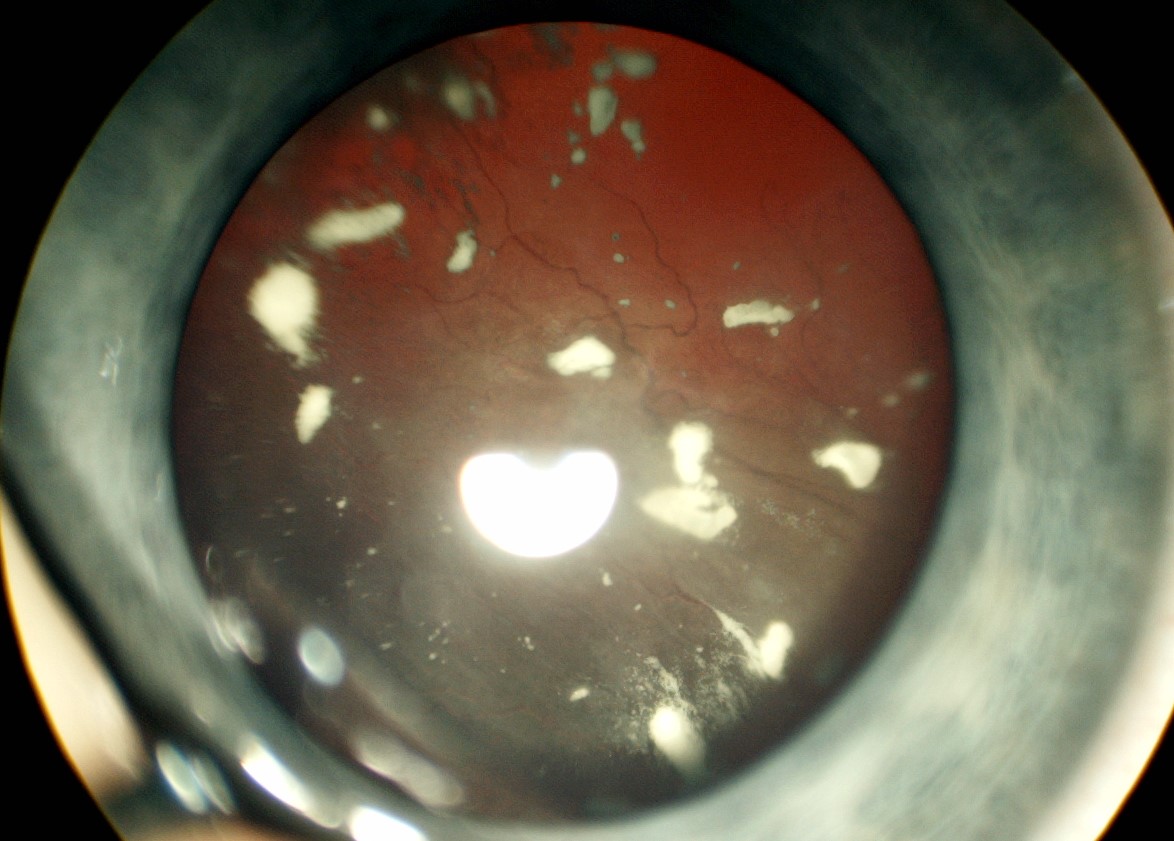Retinoblastoma is the most common primary malignant intraocular tumor in children. Seeding, specifically the dispersion of the tumor into the adjacent compartments, represents a major parameter determining the degree of retinoblastoma according to the International Classification of Retinoblastoma. In this article we focused on vitreous seeding, one of the main limiting factors in the successful “eye preservation treatment” of retinoblastoma. This article presents an overview of the history of vitreous seeding of retinoblastoma, established treatment procedures and new-research modalities. The introduction of systemic chemotherapy in the treatment of retinoblastoma at the end of the 1990s represented a significant breakthrough, which enabled the progressive abandonment of radiotherapy with its attendant side effects. However, the attained concentrations of chemotherapeutics in the vitreous space during systemic chemotherapy are not sufficient for the treatment of vitreous seeding, and the toxic effects of systemic chemotherapy are not negligible. A significant change came with the advent of chemotherapy in situ, with the targeted administration of chemotherapeutic drugs, namely intra-arterial and intravitreal injections, contributing to the definitive eradication of external radiotherapy and a reduction of systemic chemotherapy. Although vitreous seeding remains the most common reason for the failure of intra-arterial chemotherapy, this technique has significantly influenced the original treatment regimen of children with retinoblastoma. However, intravitreal chemotherapy has made the greatest contribution to increasing the probability of preservation of the eyeball and visual functions in patients with advanced findings. Novel local drug delivery modalities, gene therapy, oncolytic viruses and immunotherapy from several ongoing preclinical and clinical trials may represent promising approaches in the treatment of vitreous retinoblastoma seeding, though no clinical trials have yet been completed for routine use.
- Therapy for Vitreous Seeding Caused by Retinoblastoma. A Review
- Visual Neuroprosthesis – Stimulation of Visual Cortical Centers in The Brain. Design of Non-Invasive Transcranial Stimulation of Functional Neurons
- Vogt-Koyanagi-Harada Disease: The Clinical Spectrum and Management of Case Series in a Tertiary Eye Centre in Northern Part Of Malaysia
- Evaluation of Clinical Results of Implantation of Toric Intraocular Lenses Including their Rotational Stability
- Retinal Changes in Patients With Covid-19 and Different Expressiveness of Metabolic Changes
- Correct Replacement of Calcified Hydrophilic Intraocular Lens Lentis M+ LS-313 MF30. A Case Report

